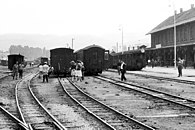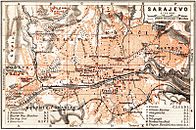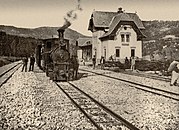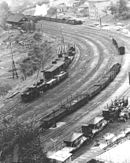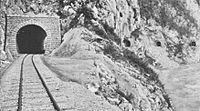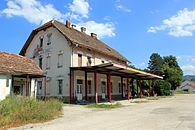Bosnian Eastern Railway
| Bosnian Eastern Railway | ||||||||||||||||||||||||||||||||||||||||||||||||||||||||||||||||||||||||||||||||||||||||||||||||||||||||||||||||||||||||||||||||||||||||||||||||||||||||||||||||||||||||||||||||||||||||||||||||||||||||||||||||||||||||||||||||||||||||||||||||||||||||||||||||||||||||||||||||||||||||||||||||||||||||||||||||||||||||||||||||||||||||||||||||||||||||||||||||||||||||||||||||||||||||||||||||||||||||||||||||||||||||||||||||||||||||||||||||||||||||||||||||||||||||||||||||||||||||||||||||||||||||||||||||||||||||||||||||||||||||||||||||||||||||||||||||||||||||||||||||||||||||||||||||||||||||||||||||||||||||||||||||||||||||||||||||||||||||||||||||||||||||||||||||||||||||||||||
|---|---|---|---|---|---|---|---|---|---|---|---|---|---|---|---|---|---|---|---|---|---|---|---|---|---|---|---|---|---|---|---|---|---|---|---|---|---|---|---|---|---|---|---|---|---|---|---|---|---|---|---|---|---|---|---|---|---|---|---|---|---|---|---|---|---|---|---|---|---|---|---|---|---|---|---|---|---|---|---|---|---|---|---|---|---|---|---|---|---|---|---|---|---|---|---|---|---|---|---|---|---|---|---|---|---|---|---|---|---|---|---|---|---|---|---|---|---|---|---|---|---|---|---|---|---|---|---|---|---|---|---|---|---|---|---|---|---|---|---|---|---|---|---|---|---|---|---|---|---|---|---|---|---|---|---|---|---|---|---|---|---|---|---|---|---|---|---|---|---|---|---|---|---|---|---|---|---|---|---|---|---|---|---|---|---|---|---|---|---|---|---|---|---|---|---|---|---|---|---|---|---|---|---|---|---|---|---|---|---|---|---|---|---|---|---|---|---|---|---|---|---|---|---|---|---|---|---|---|---|---|---|---|---|---|---|---|---|---|---|---|---|---|---|---|---|---|---|---|---|---|---|---|---|---|---|---|---|---|---|---|---|---|---|---|---|---|---|---|---|---|---|---|---|---|---|---|---|---|---|---|---|---|---|---|---|---|---|---|---|---|---|---|---|---|---|---|---|---|---|---|---|---|---|---|---|---|---|---|---|---|---|---|---|---|---|---|---|---|---|---|---|---|---|---|---|---|---|---|---|---|---|---|---|---|---|---|---|---|---|---|---|---|---|---|---|---|---|---|---|---|---|---|---|---|---|---|---|---|---|---|---|---|---|---|---|---|---|---|---|---|---|---|---|---|---|---|---|---|---|---|---|---|---|---|---|---|---|---|---|---|---|---|---|---|---|---|---|---|---|---|---|---|---|---|---|---|---|---|---|---|---|---|---|---|---|---|---|---|---|---|---|---|---|---|---|---|---|---|---|---|---|---|---|---|---|---|---|---|---|---|---|---|---|---|---|---|---|---|---|---|---|---|---|---|---|---|---|---|---|---|---|---|---|---|---|---|---|---|---|---|---|---|---|---|---|---|---|---|---|---|---|---|---|---|---|---|---|---|---|---|---|---|---|---|---|---|---|---|---|---|---|---|---|---|---|---|---|---|---|---|---|---|---|---|---|---|---|---|---|---|---|---|---|---|---|---|---|---|---|---|---|---|---|---|---|---|---|---|---|---|---|---|---|---|---|---|---|---|---|---|---|---|---|---|---|---|---|---|---|---|---|---|---|---|---|---|---|---|---|---|---|---|---|---|---|---|---|---|---|---|---|---|---|---|---|---|---|---|---|---|---|---|---|---|---|---|---|---|---|---|---|---|---|---|---|---|---|---|---|---|---|---|---|---|---|---|---|---|---|---|---|---|---|---|---|---|---|---|---|---|---|---|---|---|---|---|---|---|---|---|---|---|---|---|---|---|---|---|---|---|---|---|---|---|---|---|---|---|---|---|---|---|---|---|---|---|---|---|---|---|
|
The sections of the route opened in 1906 are shown in red, sections that were commissioned later in orange.
| ||||||||||||||||||||||||||||||||||||||||||||||||||||||||||||||||||||||||||||||||||||||||||||||||||||||||||||||||||||||||||||||||||||||||||||||||||||||||||||||||||||||||||||||||||||||||||||||||||||||||||||||||||||||||||||||||||||||||||||||||||||||||||||||||||||||||||||||||||||||||||||||||||||||||||||||||||||||||||||||||||||||||||||||||||||||||||||||||||||||||||||||||||||||||||||||||||||||||||||||||||||||||||||||||||||||||||||||||||||||||||||||||||||||||||||||||||||||||||||||||||||||||||||||||||||||||||||||||||||||||||||||||||||||||||||||||||||||||||||||||||||||||||||||||||||||||||||||||||||||||||||||||||||||||||||||||||||||||||||||||||||||||||||||||||||||||||||||
| Route length: | 228.0 km | |||||||||||||||||||||||||||||||||||||||||||||||||||||||||||||||||||||||||||||||||||||||||||||||||||||||||||||||||||||||||||||||||||||||||||||||||||||||||||||||||||||||||||||||||||||||||||||||||||||||||||||||||||||||||||||||||||||||||||||||||||||||||||||||||||||||||||||||||||||||||||||||||||||||||||||||||||||||||||||||||||||||||||||||||||||||||||||||||||||||||||||||||||||||||||||||||||||||||||||||||||||||||||||||||||||||||||||||||||||||||||||||||||||||||||||||||||||||||||||||||||||||||||||||||||||||||||||||||||||||||||||||||||||||||||||||||||||||||||||||||||||||||||||||||||||||||||||||||||||||||||||||||||||||||||||||||||||||||||||||||||||||||||||||||||||||||||||
| Gauge : | 760 mm ( Bosnian gauge ) | |||||||||||||||||||||||||||||||||||||||||||||||||||||||||||||||||||||||||||||||||||||||||||||||||||||||||||||||||||||||||||||||||||||||||||||||||||||||||||||||||||||||||||||||||||||||||||||||||||||||||||||||||||||||||||||||||||||||||||||||||||||||||||||||||||||||||||||||||||||||||||||||||||||||||||||||||||||||||||||||||||||||||||||||||||||||||||||||||||||||||||||||||||||||||||||||||||||||||||||||||||||||||||||||||||||||||||||||||||||||||||||||||||||||||||||||||||||||||||||||||||||||||||||||||||||||||||||||||||||||||||||||||||||||||||||||||||||||||||||||||||||||||||||||||||||||||||||||||||||||||||||||||||||||||||||||||||||||||||||||||||||||||||||||||||||||||||||
| Maximum slope : | Most nad Drini – Priboj: 5 ‰ Ustiprača – Foča: 7 ‰ Ustiprača – Višegrad: 12 ‰ Sarajevo – Ustiprača and Višegrad – Vardište: 18 ‰ Foča – Miljevina: 30 ‰ |
|||||||||||||||||||||||||||||||||||||||||||||||||||||||||||||||||||||||||||||||||||||||||||||||||||||||||||||||||||||||||||||||||||||||||||||||||||||||||||||||||||||||||||||||||||||||||||||||||||||||||||||||||||||||||||||||||||||||||||||||||||||||||||||||||||||||||||||||||||||||||||||||||||||||||||||||||||||||||||||||||||||||||||||||||||||||||||||||||||||||||||||||||||||||||||||||||||||||||||||||||||||||||||||||||||||||||||||||||||||||||||||||||||||||||||||||||||||||||||||||||||||||||||||||||||||||||||||||||||||||||||||||||||||||||||||||||||||||||||||||||||||||||||||||||||||||||||||||||||||||||||||||||||||||||||||||||||||||||||||||||||||||||||||||||||||||||||||
| Minimum radius : |
Bistrik – Ustiprača: 200 m Ustiprača – Vardište and Most nad Drini – Priboj: 175 m Sarajevo – Bistrik and Ustiprača – Foča: 125 m Foča – Miljevina: 60 m |
|||||||||||||||||||||||||||||||||||||||||||||||||||||||||||||||||||||||||||||||||||||||||||||||||||||||||||||||||||||||||||||||||||||||||||||||||||||||||||||||||||||||||||||||||||||||||||||||||||||||||||||||||||||||||||||||||||||||||||||||||||||||||||||||||||||||||||||||||||||||||||||||||||||||||||||||||||||||||||||||||||||||||||||||||||||||||||||||||||||||||||||||||||||||||||||||||||||||||||||||||||||||||||||||||||||||||||||||||||||||||||||||||||||||||||||||||||||||||||||||||||||||||||||||||||||||||||||||||||||||||||||||||||||||||||||||||||||||||||||||||||||||||||||||||||||||||||||||||||||||||||||||||||||||||||||||||||||||||||||||||||||||||||||||||||||||||||||
|
||||||||||||||||||||||||||||||||||||||||||||||||||||||||||||||||||||||||||||||||||||||||||||||||||||||||||||||||||||||||||||||||||||||||||||||||||||||||||||||||||||||||||||||||||||||||||||||||||||||||||||||||||||||||||||||||||||||||||||||||||||||||||||||||||||||||||||||||||||||||||||||||||||||||||||||||||||||||||||||||||||||||||||||||||||||||||||||||||||||||||||||||||||||||||||||||||||||||||||||||||||||||||||||||||||||||||||||||||||||||||||||||||||||||||||||||||||||||||||||||||||||||||||||||||||||||||||||||||||||||||||||||||||||||||||||||||||||||||||||||||||||||||||||||||||||||||||||||||||||||||||||||||||||||||||||||||||||||||||||||||||||||||||||||||||||||||||||
|
Route profile of the Bosnian Eastern Railway. The sections of the route opened in 1906 are shown with a red line, and sections that were put into operation later are shown with an orange line. |
||||||||||||||||||||||||||||||||||||||||||||||||||||||||||||||||||||||||||||||||||||||||||||||||||||||||||||||||||||||||||||||||||||||||||||||||||||||||||||||||||||||||||||||||||||||||||||||||||||||||||||||||||||||||||||||||||||||||||||||||||||||||||||||||||||||||||||||||||||||||||||||||||||||||||||||||||||||||||||||||||||||||||||||||||||||||||||||||||||||||||||||||||||||||||||||||||||||||||||||||||||||||||||||||||||||||||||||||||||||||||||||||||||||||||||||||||||||||||||||||||||||||||||||||||||||||||||||||||||||||||||||||||||||||||||||||||||||||||||||||||||||||||||||||||||||||||||||||||||||||||||||||||||||||||||||||||||||||||||||||||||||||||||||||||||||||||||||
The Bosnian Eastern Railway was a narrow-gauge railway line in Bosnian gauge from Sarajevo to Uvac (137.6 km) and with a branch from Most nad Drini to Vardište (29.1 km) in Bosnia and Herzegovina . It was built from August 1902 to summer 1904 by the Bosnian-Herzegovinian State Railways (BHStB) and initially operated. After 1918 it was part of the Yugoslav State Railways (JDŽ / JŽ), which in 1929 extended the Eastern Railway with the 4.5-kilometer section from Uvac across today's Serbian border to Priboj . The Ustiprača - Foča wing railway opened in 1939 with the Foča – Miljevina extension opened in 1962 only belongs to the Bosnian Eastern Railway in the broader sense. In the 1970s, the Bosnian Eastern Railway stopped operating.
history
Planning and construction
As early as 1900, during the construction of the Narentabahn , Reich Finance Minister Benjámin Kállay proposed to the Austrian and Hungarian governments that a standard-gauge main line be built through Bosnia and the Sanjak to Novi Pazar , despite its relatively minor economic importance . However, the significant additional costs spoke against a standard-gauge railway. A conversion of the Bosnabahn to standard gauge was estimated at 50 million crowns .
Because Hungary did not want to participate in the financing of this connection, an agreement was reached on the construction of a less costly narrow-gauge railway from Sarajevo to Uvac on the Bosnian- Ottoman border and to Vardište on the Serbian border. The construction costs were estimated at 75 million crowns. For the construction of this mountain railway with a maximum gradient of 18 ‰ it was necessary to build over 100 tunnels and galleries, a large number of high retaining walls and numerous bridges. For the construction of the 130-meter-long Drina Bridge at km 98.7, 94 railway wagons had to be brought in from the manufacturing plant in Cieszyn . The assembly of the iron structure required the construction of a 10 meter wide and 23 meter high wooden scaffolding.
The Bosnian Eastern Railway, opened in 1906, served mainly military purposes and allowed the Gorazda , Foča and Čajniče garrisons to be better connected. The route ran largely through uninhabited area and opened up a single city with Višegrad. As long as the Eastern Railway had no connection to Serbia, it was of little economic importance. Although the construction of the Eastern Railway was primarily due to the military interests of the Habsburg Monarchy , it had to be financed by Bosnia and Herzegovina . The expensive railroad brought hardly any profit and the debts incurred during the construction contributed to slow economic growth. However, the connection was marketed for tourism, for example in the 1908 travel guide by Milena Preindlsberger-Mrazovič .
First World War
The aim of the first attack on Serbia started on August 12, 1914 by Potiorek was a quick victory, which was not achieved due to lack of supplies. The narrow-gauge Eastern Railway with its limited capacity was the only railway line leading to Serbia. On September 6, Serbian and Montenegrin troops began an attack on Sarajevo, which led up to 20 kilometers from the city. On September 18, 1914, the Ostbahn was evacuated to Pale and the Drina bridge at km 98.7 was blown up.
After the Eastern Railway had been recaptured in November 1915 as part of the Central Powers' Serbian campaign , the Bosnian-Herzegovinian state railways resumed operations. A temporary cable car was built over the Drina. The new bridge was opened to traffic on April 24, 1916. From the summer of 1917 it became more and more difficult to maintain operations. The war years tore at the strength of the staff and the material was used very intensively, but poorly maintained.
Yugoslavia

After the First World War, the Bosnian Eastern Railway came to the railways of the Kingdom of Serbia, Croatia and Slovenia (SHS) and later to the Yugoslav State Railways (JDŽ / JŽ). In 1925 the Bosnian-Herzegovinian and the Serbian narrow-gauge network were connected with the Šarganska osmica from Vardište to Užice . When the line was continuously passable, the section from Most nad Drini to Vardište was more important than the branch line Most nad Drini – Uvac – Priboj. Day and night express trains now ran between Sarajevo and the capital Belgrade , although their speed and comfort left a lot to be desired.

In 1929 the extension from Uvac to Priboj and in 1932 the 42 km long branch line Ustiprača - Foča was put into operation. These new sections, built after the First World War, are not to be assigned to the Bosnian Eastern Railway in the narrower sense and were of purely regional importance. The latter was extended to Miljevina in 1962 in order to develop the local lignite mine .
In the 1960s, at the time the standard-gauge line from Sarajevo to Ploče was being built , various variants for a standard-gauge eastern line were discussed again. After a project outline that some interested parties was visible in the railway administration Sarajevo in 1965, was the Umspuren the then existing line in two versions for rebinding to a through station Sarajevo in conversation, as well as a new alignment through the Kasidolskatal with tunneling of the Jahorina . However, none of these projects was implemented.
At that time, three pairs of continuous passenger trains were still running on the 406 km long route between Belgrade-Čukarica and Sarajevo (route 127, timetable 1965/66). The journey time was about 15 hours, the train was moved with steam locomotives of the series JDŽ 83 and JDŽ 85 . The JDŽ 802 diesel multiple units acquired in the second half of the 1960s also ran later . On the wing route from Ustiprača to Foča (No. 84), three pairs of passenger trains ran daily in 1965/66, plus a direct pair of trains Sarajevo – Foča and one direct train each from Višegrad –Goražde and Foča – Višegrad.
The commissioning of the high-performance standard-gauge connection Belgrade-Strizivojna-Vrpolje - Šamac-Sarajevo finally made the Bosnian Eastern Railway superfluous. In 1974 the through trains were abandoned on the scenic narrow-gauge line. The last sections were discontinued on May 28, 1978.
Openings and shutdowns of the sections
| Sarajevo – Dobrun | 4th July 1906 | May 28, 1978 | 120.5 km |
| Most nad Drini – Uvac | 38.8 km | ||
| Dobrun – Vardište | August 1, 1906 | 7.4 km | |
| Uvac – Priboj | January 1, 1929 | 4.5 km | |
| Ustiprača – Foča | September 17, 1939 | May 22, 1977 | 41.6 km |
| Sarajevo – Novo Sarajevo | May 20, 1951 | May 1, 1968 | 1.2 km |
| Foča – Miljevina | July 1, 1962 | April 1, 1976 | 14.0 km |
| Total | 228.0 km | ||
Route description
Because of its demanding route, the Ostbahn was described in detail in Hartleben's illustrated travel guide from 1910.
"This new railway line is one of the most interesting routes in Europe and is not only great because of the natural beauties of the areas it passes through, but also because of the monumental structures that are a natural consequence of the geological and terrain conditions of the districts traversed by the route worth seeing."
Sarajevo – Pale
Shortly after the Sarajevo train station (524 m above sea level ), the train branched off from the line leading to Mostar , then made an arc to the east, climbed the Trebević hill through the upper part of Sarajevo (6.5 km station Bistrik ), followed the partly rocky slope of Miljacka Paljanska and from km 12 crossed the 6.5 km long, previously inaccessible gorge of this creek, in which, due to the strong curvatures, many tunnels and leanings, three large iron bridges, deep rock fissures and high ones Walls were required. On the now following high plateau at km 19.2 (308 m higher than Sarajevo) is the place Pale in an alpine-looking environment.
Sarajevo around 1905 with the Ostbahn route through the suburb of Bistrik in the south of the city.
View from tunnel no. 6 to tunnel no. 7 in the Miljacka gorge
Waiting train in Pale station
Pale – Ustiprača
After Pale, after a further 100 meters of climbing, the watershed between Bosna and Drina was driven under in the 852 m long Jahorina tunnel. From here the line ran with a constant gradient of 18 ‰ to the Drina ( Ustiprača at km 83, 340 m above sea level).
"The railway runs through a tunnel 210 m long, on the left-hand side of the Stambulčićbach, but because it drops too steeply, it has to develop outside of it in a double loop, under the Poststrasse in a tunnel 290 m long east of the Circle the isolated hilltop of the road, cross Poststraße again at km 31.1 à niveau, again pass two tunnels 380 and 230 m long in a long arc, to finally be the leading one on a viaduct over Poststraße and the brook and a high bridge near Rakite Grabovica valley and continue to reach Prača valley at Han Podgrabom . From km 53 the Prača valley narrows again, which, due to the multiple and sharp bends with steep limestone walls, requires the construction of numerous tunnels, bridges and viaducts, making this 29 km long section, up to km 82, one of the most difficult of the new ones Bahn belongs. "

An impressive section of the route was at 68 km below Varošište , where the Prača Gorge was buried by a rock fall and the cone of debris dammed the Prača. “The train […] quickly makes room in the rock rubble through three short tunnels, nimbly moves over two deep cracks with iron structures of 20 m and 50 m span and finds itself on a path that has been hacked back into the natural rock so high above the Prača that she still has to drive 3 km on the steepest gradient [...]. "
Mudslides in front of tunnels 49 and 50 in the Prača Gorge
Mixed train in Ustiprača station
Ustiprača – Foča – Miljevina
In the Ustiprača station, from 1939 the wing railway leading up the Drina to Goražde - Foča - Miljevina branched off, which was mainly used for timber transport. The trains from Foča to Ustiprača ran on the left bank of the Drina; only at Goražde did the route change to the right bank of the river. Both bridges were destroyed in the Second World War and the railway ran provisionally on the left side of the Drina until the bridges were rebuilt. In 1962 the branch line to Miljevina was extended in order to open up the local lignite mine .
Endurance test of the slope bridge between Ustiprača and Kopači
Construction of the Drina bridge km 7.3
Ustiprača – Most na Drini – Vardište
Via galleries, retaining walls and tunnels (the longest is 603 m long) the railway reached the valley widening at Međeđa (327 m above sea level, left side of the valley) and crossed the Drina by means of a 130 m long steel lattice bridge, which was the longest bridge in Bosnia at the time. Herzegovina. Immediately after the bridge in Most na Drini the railway to Priboj branched off in a southerly direction. The other branch of the railway led after branching in a north-easterly direction, now following the right bank of the Drina, to Višegrad, known for the Ottoman bridge over the Drina , and further in the Rzav valley to the former border garrison Vardište. Here, after the First World War, the connection with the Serbian narrow-gauge network took place. In an imposing route with long ramps and spiral tunnels, the approx. 250 meters in altitude to the Šargan pass were overcome from Mokra Gora .
Međeđa train station on the Drina
Rzav Bridge and behind it the east portal of tunnel no.11
Most na Drini – Uvac – Priboj
Immediately after the bridge in Most na Drini, the railway to Priboj branched off in a southerly direction and the trains disappeared in tunnel no. 65. Upstream, following the right bank of the Lim , the route led 4 kilometers through 11 short tunnels. After three more tunnels, the route first reached Strmac and then Setihovo. Further along the Lims the railway reached with the help of other engineering structures by Rudo , where the valley opens slightly. The river now forms the Bosnian border and the route reached its original end in the village of Uvac, where the river of the same name flows into the Lim.
South portals of tunnels No. 67 and 66 immediately before the mouth of the Lim in the Drina
Current condition
The railway line has largely been preserved and is easy to find thanks to the many cuts, retaining walls and tunnels. The ramp near Bistrik has served as Sarajevo's southern bypass since the 1984 Olympic Games and is called Put Mladih Muslimana . The Bistrik station building is still there. In front of the tunnel at the city exit, a footpath leads to the former railway line. The Dovlići station building high above the Miljacka Gorge is in decay, but can still be seen. The Dobrik Viaduct no longer exists, but can be bypassed on a narrow path. The forests to the left and right of the route between Močila and Dovlići are partially mined.
If you drive east on the road from Sarajevo and follow the signs to Goražde in Pale, you come to the summit tunnel of the Eastern Railway, which was still used by road traffic in a single lane until the completion of a new road tunnel in 2010. The Stambulčić station building on the other side of the tunnel still looks quite intact, in contrast to that of Prača, which has been destroyed. The road divides below Prača: to the right a narrow, almost continuously paved road leads over the pass in the direction of Goražde, straight ahead (with a warning sign) the route of the Eastern Railway is used for the unpaved main road 5 Pale – Ustiprača. It runs through many single-lane and unlit tunnels. At the former Most nad Drini junction, the steel lattice bridge leading to the right bank of the Drina has been preserved. Here, too, a gravel road leads along the route. In the further course the route sinks into the Drina dammed above Višegrad. The continuation of the line from Mokra Gora to the Šargan Pass, called Šarganska osmica , was rebuilt from 1999 and is operated as a museum railway. Also as part of the museum railway project, the eastern railway between Višegrad and Mokra Gora was rebuilt in the first years of the 21st century. The opening took place on August 27, 2010.
At Rudo a part of the branch through the Lim valley is still preserved; the section between Rudo and Mioče - including a tunnel - is now used as a cycle path.
The bridges on the Ustiprača – Foča – Miljevina wing line that cross the Prača and Drina are still there. Due to the damming of the Drina, the clear height of the Prača bridge has decreased significantly (see picture below). The Drina bridges before and after Goražde lead a side road to the other bank of the river. From the slope bridge between Ustiprača and Kopači only the pillars on the bank of the dammed Drina can be found.
literature
- The development of the Bosnian-Herzegovinian railway network. In: Danzer's Army Newspaper , No. 46/1903 (Volume VIII), November 12, 1903, pp. 3–6. (Online at ANNO ). .
- Milena Preindlsberger-Mrazovič: The Bosnian Eastern Railway. Illustrated guide on the Bosnian Hercegovinian state railway lines Sarajevo-Uvac and Megjegje-Vardiste. A. Hartleben's Verlag, Vienna / Leipzig 1908. - Full text online .
- Julius Pojman, CA Neufeld: Illustrated Guide to Bosnia and Herzegovina . Third, completely revised edition. Hartleben, Vienna / Leipzig 1910, OBV .
- Johann Rihosek , K. Schäffer: Locomotives of the railways in Bosnia and Herzegovina . Special issue of the journal Eisenbahn . Ployer, Vienna 1952, OBV . (Reprint 2005).
- Alfred Horn: The railways in Bosnia and Herzegovina . Special issue of the journal Eisenbahn . Ployer, Vienna 1964, OBV .
- Keith Chester: The Narrow Gauge Railways of Bosnia-Hercegovina . Stenvalls, Malmö 2006, ISBN 91-7266-166-6 .
- Keith Chester: Bosnia-Hercegovina Narrow Gauge Album . Stenvalls, Malmö 2010, ISBN 978-91-7266-176-9 .
- Elmar Oberegger: Bosnian Eastern Railway. In: Encyclopedia on the railway history of the Alps-Danube-Adriatic region. 2006, accessed November 1, 2016 .
- Werner Schiendl : The railways in Bosnia and Herzegovina 1867-1918 . Edition Bahn im Film, Vienna 2015, ISBN 978-3-9503096-5-2 .
- Werner Schiendl, Franz Gemeinböck: The railways in Bosnia and Herzegovina 1918 - 2016 . Edition Bahn im Film, Vienna 2017, ISBN 978-3-9503096-7-6 .
- The bridge over the Drina , the main work of the Nobel Prize laureate Ivo Andrić , contains in chapter 16 a literary appreciation of the Bosnian Eastern Railway.
Movie
Web links
- Historic Railway The Bosnian Eastern Railway near Sarajevo, August 1966. In: Drehscheibe-Online.
- Historical railway The Bosnian Eastern Railway near Ustiprača, 1969. In: Drehscheibe-Online.
- Enver Pršeš: Photo of the Ustiprača railway system . In: Photobucket
- Milena Preindlsberger-Mrazovič: The Bosnian Eastern Railway: Illustrated guide on the Bosnian-Hercegovinian state railway lines Sarajevo – Uvac u. Megjegje – Vardište ; Vienna, Leipzig: A. Hartleben's Verlag, 1908, e-book from the Vienna University Library ( e-books on demand )
- Istočna pruga Sarajevo – Ustiprača – Višegrad – Vardište on the Serbian-speaking forum “Forum ljubitelja železnica” with lots of photos
- Pruga uskog koloseka Ustiprača – Goražde – Foča – Miljevina on the Serbian-speaking forum "Forum ljubitelja železnica"
- Pruga uskog koloseka Međeđa – Uvac – Priboj on the Serbian-speaking forum "Forum ljubitelja železnica"
- The Ostbahn A selection of photos by Detlef Schikorr. In: The 76 cm gauge railways of Yugoslavia.
- Sarajevo in 1966 A selection of photos by Helmut Dahlhaus. In: The 76 cm gauge railways of Yugoslavia.
- Sarajevo A selection of photos by Detlef Schikorr. In: The 76 cm gauge railways of Yugoslavia.
- Yugoslav Narrow Gauge Railways: Sarajevo Eastern Railway ( photos from 1967)
- Sarganska Osmica - Mokra Gora (color film from 1970)
Notes and individual references
- ↑ a b c d according to the JŽ
- ↑ Kilometrage of the JŽ with zero point in Belgrade
- ↑ In brackets the BHStB with zero point in Most na Drini
- ^ Tunnel numbering of the BHStB; the JŽ used a different numbering from Belgrade.
- ↑ Kilometrage of the JŽ with zero point in Most na Drini
- ↑ a b c Kilometers of the BHStB with zero point in Sarajevo in brackets
- ↑ a b Until the Ustiprača – Goražde – Foča wing line opened in 1939, the station was called Ustiprača-Goražde.
- ↑ a b dotted: provisional route to the left of the Drina during the Second World War
- ↑ also Hrenovica
- ↑ Today Sarajevo Central Station
- ^ Today the Sarajevo – Ploče railway line
- ^ Today the Šamac – Sarajevo railway line
- ↑ Source: Pruga uskog koloseka Užice-Šargan-Vardište on the Serbian-speaking forum "Forum ljubitelja železnica"
- ↑ according to Horn: The railways in Bosnia and Herzegovina
- ↑ Železnice Kraljevine Srba, Hrvata i Slovenaca
- ^ Elmar Oberegger: Bosnian Eastern Railway
- ↑ Walter defends Sarajevo , a 1972 Yugoslav partisan film by Hajrudin Krvavac with Bata Živojinović, see article Walter Defends Sarajevo in the English language Wikipedia
- ↑ later pod grave
- ↑ Nos. 46, 47 and 48
- ↑ Milena Preindlsberger-Mrazovič: The Bosnian Eastern Railway , page 61






